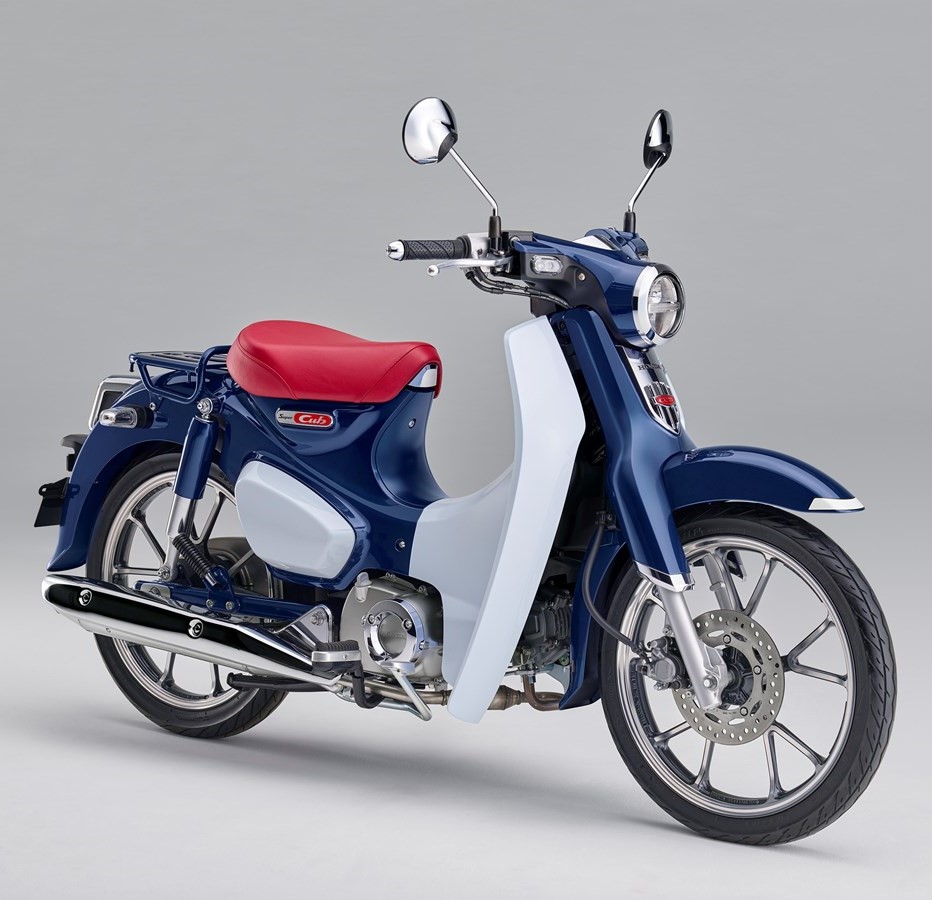The Genius of Honda's Marketing: How Mad Men Shaped the Honda Brand
This article examines Honda's revolutionary marketing strategies in the 1960s, which transformed the company from a newcomer to a household name. Honda's innovative campaigns, such as "You Meet the Nicest People on a Honda," changed the public's perception of motorcycles, repositioning them as a mode of transport for "the nicest people." Honda appealed to multiple demographics, including the youth and mature audiences, contributing to its immense market success. The lasting legacy of these strategies serves as a testament to the power of understanding cultural context and consumer psychology in shaping a successful brand image.ription.
MOPED CULTURE HONDA UNITED STATES JAPAN 1960'SFOUR STROKE
11/3/20233 min read


1960s Honda Marketing: An Examination of Revolutionary Strategies
Introduction
The 1960s, defined by its socio-economic progression and a cultural shift, witnessed a seismic wave of change in the way brands curated their marketing strategies. One such unique and lasting innovation was introduced by Honda, a Japanese automotive company best known at the time for its motorcycles and mopeds. Combining its genius on the engineering front with a keen understanding of consumer trends and cultural atmosphere, Honda rapidly transformed from a newcomer in the international market to a household name.
Historical Context
The 1960s was an era marked by high growth and high hopes. The world, recovering from the aftermath of World War II, witnessed unprecedented advancements in various arenas, with a particular emphasis on economic development and prosperity. The socio-economic climate in the United States, for one, was undergoing a significant transformation. Consumer trends were changing, shaped by a booming economy and a growing middle class. Furthermore, the cultural atmosphere was shifting, creating a fertile ground for fresh ideas that would profoundly influence consumer behavior and marketing techniques in the years to come. At the center of this socio-cultural metamorphosis was a revolution in media, emphasizing visual communication and adopting a more persuasive storytelling approach to advertising. It was in this context that Honda initiated its marketing revolution.
"Little Honda" and Cultural Influence
An epitome of the vibrant youth culture and the thrill associated with the freedom of riding motorcycles, "Little Honda" by The Beach Boys epitomizes Honda's cultural influence in the 1960s. The song, released in 1964, is more than a mere jukebox favorite. It encapsulates the essence of the biker culture and the allure of youthful rebellion. The track, infused with the taste of freedom and adventure, paints a vivid picture of the camaraderie between friends as they hit the open road on their motorcycles. Such portrayal of motorcycle culture played a crucial role in promoting the image of Honda motorcycles, associating them with a sense of exhilaration, liberation and unity.
Technical Excellence of the Super Cub C100
The entry of the Honda Super Cub C100 in the United States market marked a significant shift in the landscape of two-wheelers. Engineered with precision and excellence, this moped was not just an automobile but a symbol of revolution. The Honda Super Cub C100, also known as Cub, C50, C65, C70, and other names, was an underbone bike equipped with a four-stroke, air-cooled, single-cylinder engine. The meticulous design of the Super Cub C100, along with its technical superiority, contributed to its immense popularity. The variety in engine displacement, coupled with user-friendly features like a step-through pressed steel monocoque underbone frame, made it a product with universal appeal. Such feats of engineering transformed the perception of motorcycles and contributed significantly to Honda's appeal.
The Impact of the "You Meet the Nicest People on a Honda" Campaign
Honda's transformative "You Meet the Nicest People on a Honda" campaign was launched in the United States in 1963. The aim of the campaign was not just to promote the brand but to change the public's perception of motorcycles at large. Before the campaign, motorcycles were typically associated with societal outliers and rebels, a perception bolstered by portrayals in movies such as "The Wild One." Honda's campaign aggressively sought to change this image and instead, repositioned motorcycles as a mode of transport for "the nicest people." The powerful visuals and the light-hearted tone of the campaign brought a breath of fresh air to motorcycle marketing efforts, leaving a profound impact on the public's perception of motorcycles and Honda as a brand.
Demographic Appeal and Success
Honda's marketing strategy was comprehensive – it appealed to multiple demographics. The youth were drawn in by the idea of adventure, appeal of freedom, and the association of Honda's motorcycles with a thrilling lifestyle as portrayed in "Little Honda." The "You Meet the Nicest People on a Honda" campaign, on the other hand, catered more to a mature demographic. Its visually appealing advertisements portrayed Honda as a choice transportation option for friendly, upstanding citizens, radically broadening the average American's perception of motorcyclists. As a result, the clever campaign was successful on all fronts, cementing Honda's presence in U.S. households and contributing to its immense market success.
Lasting Legacy and Continued Impact
The indelible mark left by Honda's marketing strategies set in motion in the 1960s continues to reverberate today. The "Little Honda" song, once a youth anthem, evolved into a timeless classic, and the "You Meet the Nicest People on a Honda" campaign continues to resonate to this day. These revolutionary marketing strategies not only catapulted Honda to worldwide recognition but also helped revolutionize the perception of motorcycling in general. The legacy of these strategies serves as a testament to the power of understanding cultural context and consumer psychology in shaping a successful brand image.
